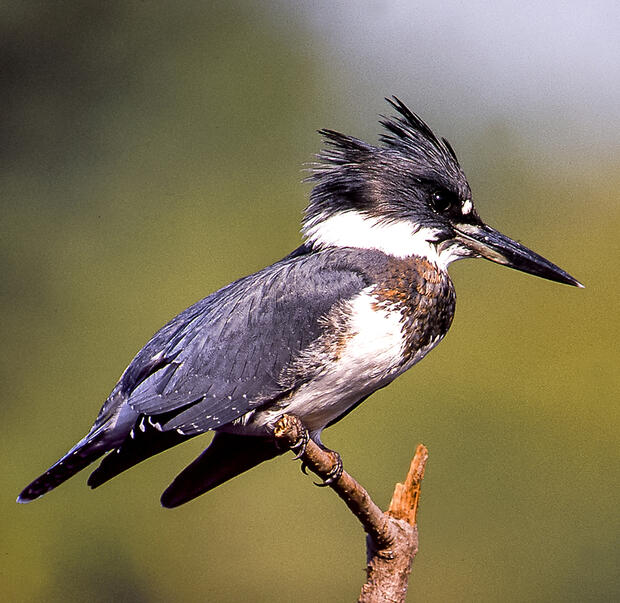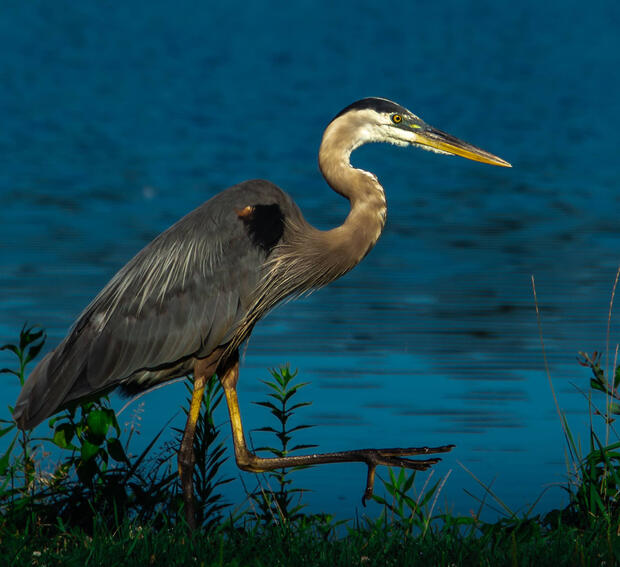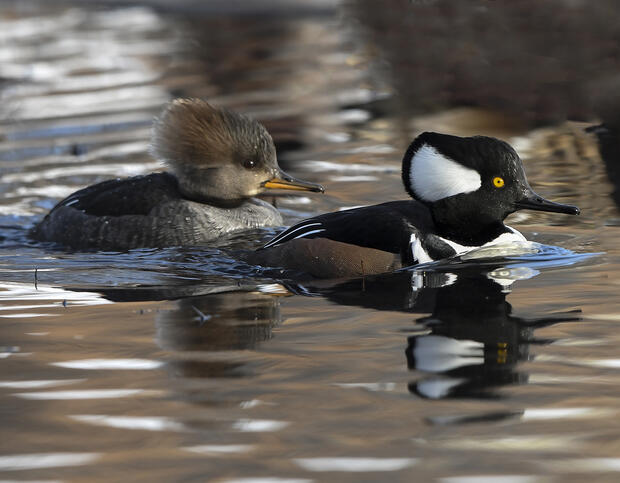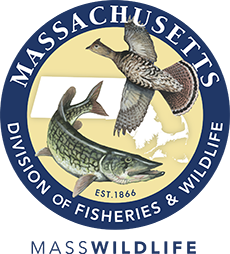- Division of Fisheries and Wildlife
Media Contact
Media Contact, MassWildlife
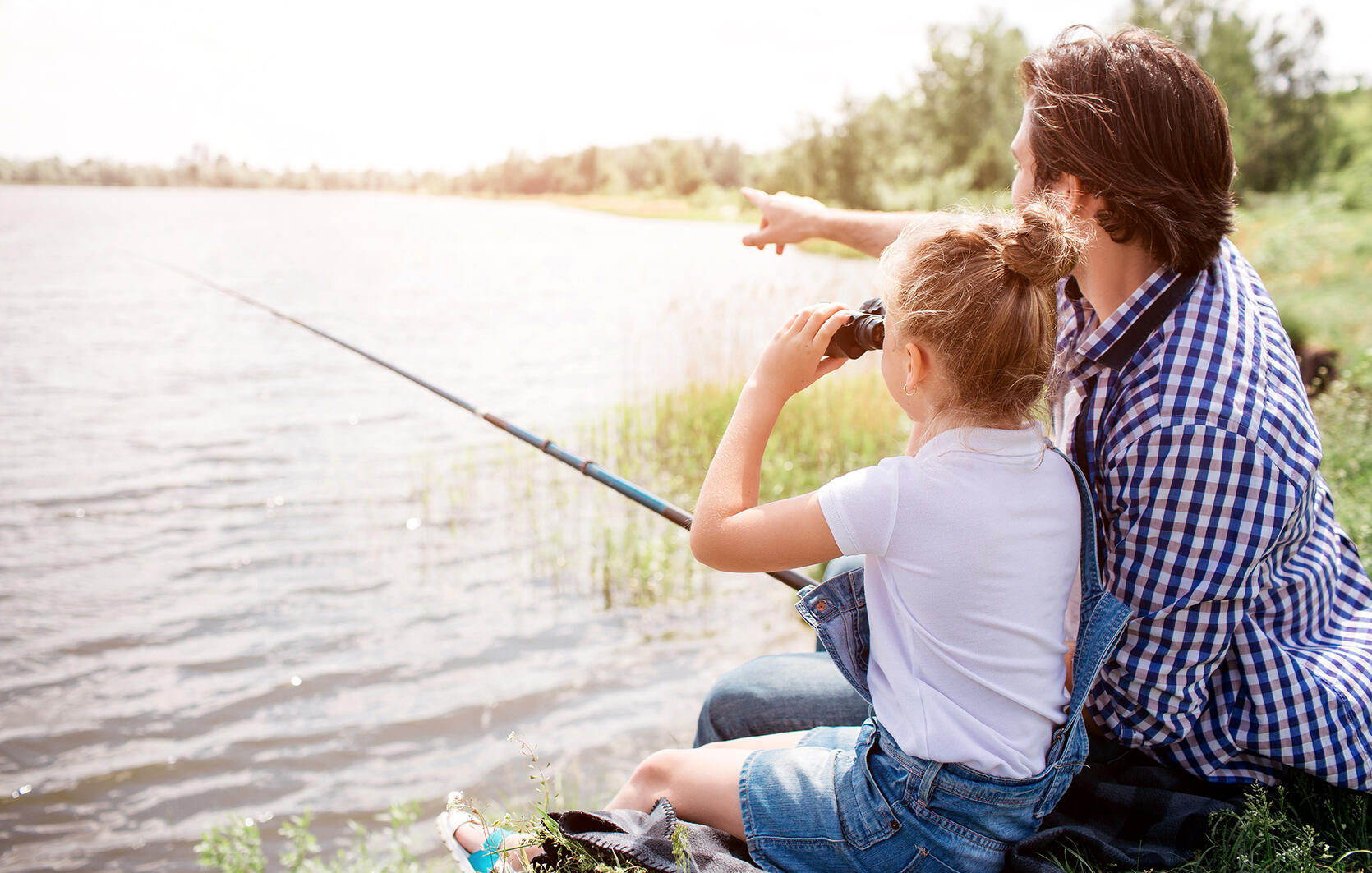
Waiting for the fish to bite? From swooping swallows to stealthy herons, there’s a lot to discover along the water’s edge. Whether you’re a seasoned angler or just out for a relaxing day by the lake, learning to identify common birds can turn a slow fishing day into a rewarding wildlife experience. Get started with these 5 birds that frequent the waters of Massachusetts.
Tree swallow
Tree swallows can be seen near most bodies of water where they can find their favorite food—aerial insects! These birds are relatively small, measuring less than 6 inches tall with an average wingspan of 12 inches. The males can be recognized by their blue-green feathers on their back, blackish feathers on their wings, and white bellies. Females are a duller brown and may be more difficult to spot and identify.
Tree swallows feed from dawn to dusk on dragonflies, bees, wasps, beetles, butterflies, and moths. Like a tiny airplane, they do acrobatic turns and glide right above the water to catch their dinner. They are a very social species, so it is common to see multiple of these birds together around the same waterbody.
Belted kingfisher
Belted kingfishers are very vocal and make their presence known along shorelines, with their calls often being described as a “piercing rattle”. They can be identified by their large heads with a crest of feathers on top. An easy way to remember this bird is to think of those crested feathers as a “crown” for the KINGfisher. Both males and females are a blue gray color, with a white band around their neck and white bellies. Females also have a band (or belt) of rust-colored feathers across their bellies, making them one of the only bird species where the females are more colorful than the males.
As their name suggests, these birds primarily eat fish. They can be seen hunting from a perch or by hovering over the water. To catch their food, they will dive in the water and grab their prey with their bill. If you see a belted kingfisher, they will likely be alone, except when they pair up for the breeding season in May and June. Watch out though! They establish territories and will defend them loudly if there is an intruder.
Great blue heron
Often lurking on the shoreline, great blue herons are the largest herons in North America, with some reaching over 4 feet tall. As indicated by their name, great blue herons are a grayish blue color with an orange or yellow-colored bill. Their feathers are often described as shaggy and they have long, wispy feathers on the backs of their heads. Another notable feature is their long necks which they often fold into an S shape.
Great blue herons use the element of surprise to catch their prey. They wade slowly through the water or stand still while they look for their next snack. Once they find something tasty, they use their long necks to quickly pluck it out of the water. They aren’t picky either! They will eat anything nearby including fish, amphibians, reptiles, small mammals, and insects.
Osprey
If you’re headed out to open water with plenty of fish, be on the lookout for ospreys. These raptors are large birds, averaging around 22 inches tall with a wingspan that can reach almost 6 feet! They have brown feathers on their wings, but have a white belly and a broad brown strip through their eyes. They like their nests to be elevated and close to the water so take a look around for a nest on treetops, or human-built platforms.
Ospreys stick to open areas and are drawn to shallow fishing grounds since they can only dive about 3 feet below the surface. Don’t try to compete with ospreys for who is the better angler—they catch fish on at least 1 in every 4 dives and usually average only 12 minutes spent hunting before making a catch!
Hooded merganser
Some of your feathered friends may be in the sky, but others you may see swimming like the hooded mergansers. These small ducks are hard to miss with their prominent crest on the tops of their heads. Males can be identified by their black and white heads, with brown feathers on their sides. Females blend in more with mostly gray and brown feathers.
As they swim, hooded mergansers will often put their heads underwater while they look for prey. They use their serrated bills to grab and eat small fish, aquatic insects, amphibians, and vegetation. To help protect their eyes, they have an extra transparent eyelid that acts like a pair of goggles.
Get hooked on birding
Next time you’re waiting for a bite by the water, take some time to observe the birds around you and maybe you’ll add a whole new layer of enjoyment to your fishing experience. Check out MassWildlife’s Get Started Birding guide for more tips for beginners.

